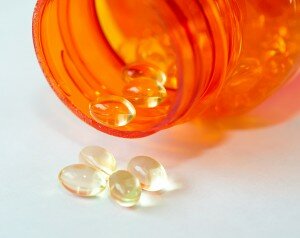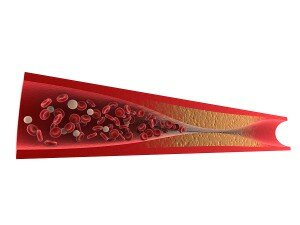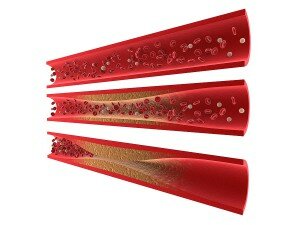 Vitamin D has long been associated with bone health. However, over the last seven years new research, especially research by Dr. Michael F. Holick, has shown that this vitamin is essential in the prevention of heart disease and a host of other illnesses. For example, research now shows that vitamin D has an active role in the following biological functions:
Vitamin D has long been associated with bone health. However, over the last seven years new research, especially research by Dr. Michael F. Holick, has shown that this vitamin is essential in the prevention of heart disease and a host of other illnesses. For example, research now shows that vitamin D has an active role in the following biological functions:
- Calcium Balance – Maintaining blood calcium levels within a narrow range is vital for cardiovascular function, bone growth, bone density, and functioning of the nervous system. Specific to the cardiovascular system, proper calcium levels are needed to activate the NOS enzymes used by the endothelial cells to create nitric oxide from the essential amino acid L-arginine.
- Cell Differentiation – The active form of vitamin D inhibits cellular proliferation and stimulates cellular differentiation. Cellular proliferation is essential for growth and wound healing but when left unchecked it can lead to cancer. Vitamin D helps to regulate this so that cells differentiate into specialized cells for specific functions in your body.
- Immune System Modulator – Research suggests that proper levels of vitamin D help to prevent the autoimmune diseases of diabetes, multiple sclerosis and rheumatoid arthritis. This vitamin also helps to boost your immune system functions.
- Insulin Secretion – New research suggests that insufficient vitamin D levels adversely effect insulin secretion and glucose tolerance in type 2 diabetes.
This is just a brief look at the role vitamin D plays in your overall health. We haven’t yet touched on how it can prevent heart disease. Before we do, we need to review some basic facts about this vitamin.
Vitamin D Basics!
There are two basic forms of vitamin D. One comes from plants in the form of ergocalciferol or vitamin D2. The other comes from humans in the form of cholecalciferol or vitamin D3. Extensive research on both D2 and D3 has shown that the D3 form is clearly better when supplementing with vitamin D.
Supplementation has become a big factor in helping people achieve the necessary amounts of vitamin D. Why? For two basic reasons:
First, your body is able to use the UVB of sunlight and convert 7-dehydrocholsterol, located in your skin, into vitamin D3. Unfortunately, we spend less time outdoors in the sunlight for a variety of reasons. This has dramatically reduced our exposure to UVB radiation needed to help people naturally produce their own vitamin D. This is compounded in the winter months when exposure to sunlight is further reduced.
Second, we’ve underestimated the daily amount of vitamin D needed for good health. For a very long time, vitamin D has been categorized as a fat-soluble vitamin. New research is clearly showing that it’s not simply a fat-soluble vitamin used just for metabolic reactions. It’s also a hormone. There are receptor sites for vitamin D on the cell membranes of most cells in your body. As our understanding of the role that vitamin D plays in both metabolic and hormonal functions has increased, the blood levels needed to sustain this activity has almost doubled from what was previously thought necessary.
Vitamin D and Heart Disease!
Thanks to the work of Dr. Michael F. Holick and others, it is clear that vitamin D plays a critical role in preventing heart disease. It does this both directly and indirectly. However, it’s important to note that either method affects the health of the endothelial cells and their ability to properly produce nitric oxide. Let’s look at one indirect connection:
Diabetes – According to Dr. Holick, children from Finland who received 2,000 IU of vitamin D a day during the first year of life and followed for 31 years reduced their risk of developing type 1 diabetes by 88%. Dr. Holick goes on to say in a recent interview
“In terms of type 2 diabetes, the beta islet cell that makes insulin has a vitamin D receptor. Active vitamin D stimulates insulin production. There is evidence that vitamin D may be directly acting on fat cells to improve insulin sensitivity. Therefore, vitamin D plays a role in insulin production, as well as enhancing insulin sensitivity and is a likely explanation for one of the studies I cite in the book (The Vitamin D Solution) that there was a 33% reduced relative risk of developing type 2 diabetes for men and women who had the highest vitamin D intake.”
Uncontrolled blood sugar, which is the challenge of diabetes, caused oxidative stress to the endothelial cells resulting in damage. Damaged endothelial cells affect the proper production of nitric oxide, which is the master signaling molecule of the cardiovascular system. This can lead to a host of heart disease issues like high blood pressure, poor circulation, blood platelet cells sticking together to increase the risk for heart attacks and strokes, and well as other damage to the vascular walls.
Now let’s look at several direct connections:
Blood Pressure Regulation – Vitamin D plays a direct role in helping you maintain your blood pressure. It does this in two ways. First, it helps to maintain proper calcium levels so that NOS enzymes used by the endothelial cells can properly produce nitric oxide. Nitric oxide is a vasodilator that relaxes the smooth muscle tone of the vascular wall. This controls blood pressure. Plus, vitamin D helps to regulate proper blood volume levels that are needed to control blood pressure.
Heart Muscle Function – Vitamin D plays a very important role in preventing muscle weakness. It also plays a significant role in nerve firing and nerve triggering of the heart muscle contraction. This means that vitamin D plays a vital role in both nerve stimulation for heart muscle contraction and the strength of that contraction.
Arteriosclerosis – Vitamin D inhibits vascular calcification by blocking the release of inflammatory cytokines and adhesion molecules that can damage the endothelial cells. This is extremely important since the American Heart Association attributes 75% of all cardiovascular disease to arteriosclerosis.
Vitamin D Daily Recommendations!
In a recent study reported in The New England Journal of Medicine, vitamin D deficiencies are more wide-spread than previously thought, by as much as 50% or higher. This is especially true for older adults. The current recommendations for adults 18 years and older are 2000 IU per day. If you are overweight or obese then you most likely need even more.
To learn more about how vitamin D can be a critical factor in improving your overall health and lowering your risk for heart disease, I would recommend The Vitamin D Solution by Michael F. Holick, PhD, MD who is considered by many to be The Pioneer of Vitamin D Research. Also, the following link on vitamin D would be helpful:
http://www.whfoods.com/genpage.php?tname=nutrient&dbid=110
Together we can work to save a million lives!
Dan Hammer
Dan Hammer has a background in biology, chemistry, and exercise physiology. He used to run one of the largest health club operations in the Chicagoland area and has been helping people with their wellness issues for more than 25 years.

 According to the American Heart Association,
According to the American Heart Association, There is a lot of confusion between arteriosclerosis and atherosclerosis but one thing is certain,
There is a lot of confusion between arteriosclerosis and atherosclerosis but one thing is certain,